எட்டு பேர் கொண்ட ஒரு பெரிய குடும்பத்தில் கடைக்குட்டியாகப் பிறந்த ஒரு சிறுவன் மனித குலத்தின் தோற்றமாக இருக்கும் பாக்டீரியாவை கண்டுபிடித்துக் கொண்டு இருக்கும் கதை தான் இந்தப் புத்தகம். மருத்துவம் படிக்க வாய்ப்புக் கிடைக்காத போது புதிதாக உருவான நுண்ணுயிரி துறையைத் தனது முனைவர் பட்டத்திற்காகப் படிக்கிறார். கடலில் இருக்கும் நுண்ணுயிரிகளைக் குறித்த ஆராய்ச்சியை ஜப்பானில் மேற்கொண்டார். அது அவருக்கு நாசாவில் நிரந்தரப் பணியை வாங்கித் தந்தது.
ஆழ்கடலில் நுண்ணுயிரியை தேடியது முதல் ஆகாயத்தில் நுண்ணுயிரிகள் எப்படித் தகவமைத்துக் கொள்கின்றன என்ற தனது ஆராய்ச்சிகளை எளிய முறையில் விவரிக்கிறார். இவரது கண்டுபிடிப்புகளுக்காக நாசா ஓன் என்ற உயரிய விருதையும் பெற்றார். வேற்றுக் கிரகத்தில் உயிரிகள் இருக்கின்றனவா அதை ஏன் படிக்க வேண்டும் என்ற விளக்கத்தைத் தனது சுயசரிதியின் வழியாகப் புத்தகத்தில் விவரிக்கிறார். வாழ்க்கையில் முன்னேறத் துடிக்கும் ஒவ்வொருவரும் எப்படி இலக்கை நோக்கிச் செல்ல வேண்டும் என்பதைத் தனது அனுபவத்திலிருந்து விளக்குகிறார். சுயசரிதை புத்தகமாகத் தொடங்கி ஒரு அறிவியல் புத்தகமாகப் பரிமாணம் அடைவதை வாசகர்கள் உணர்வார்கள்.
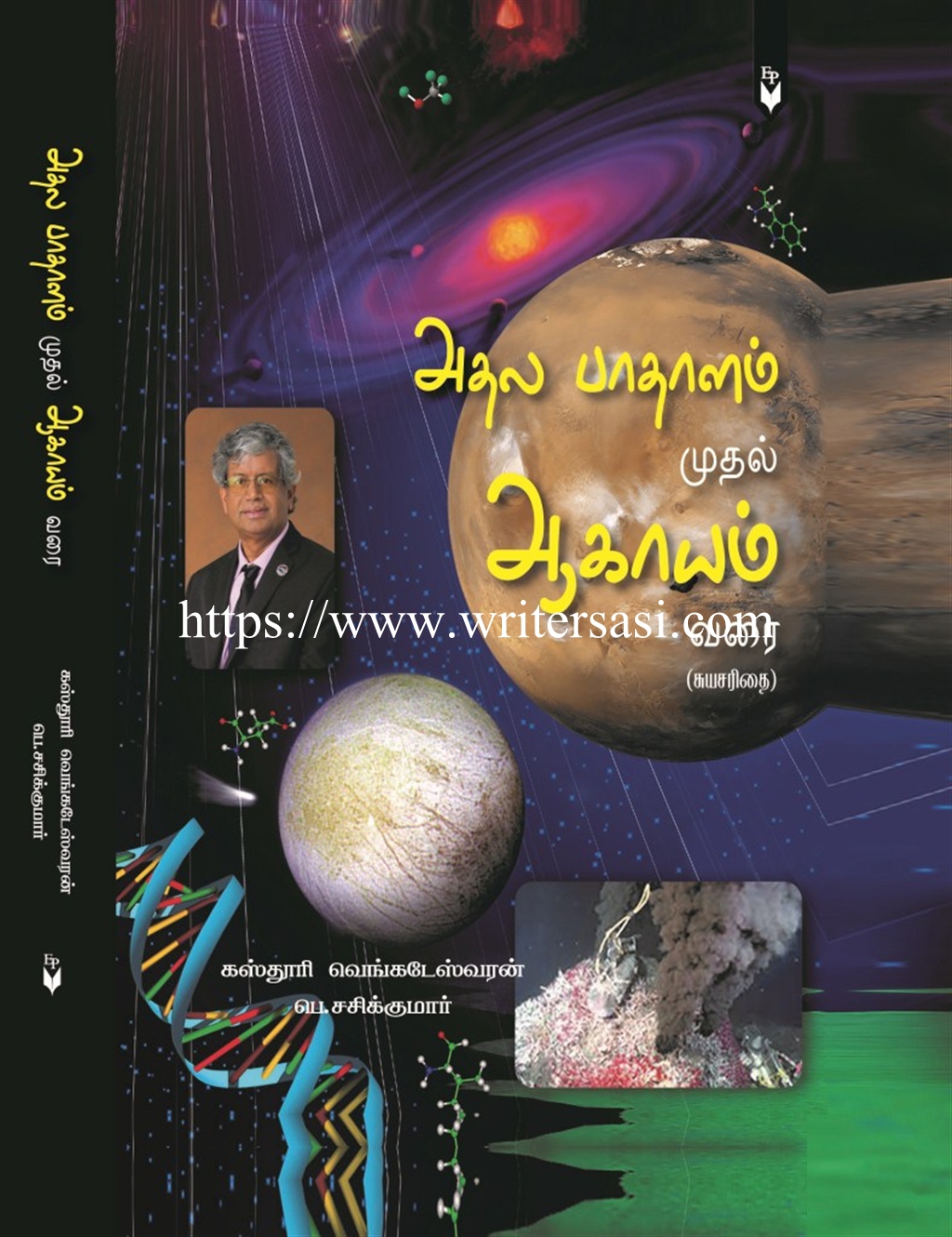
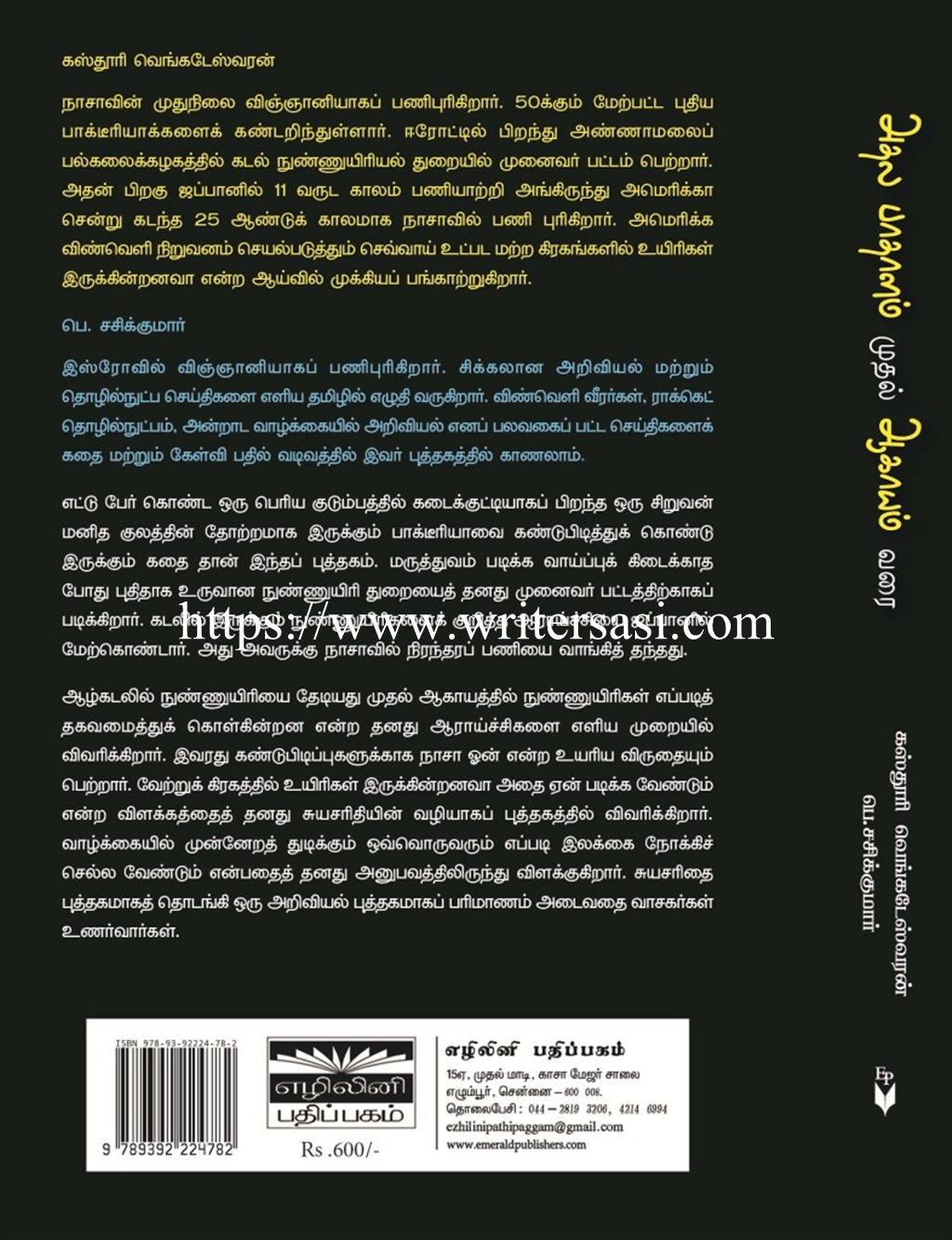
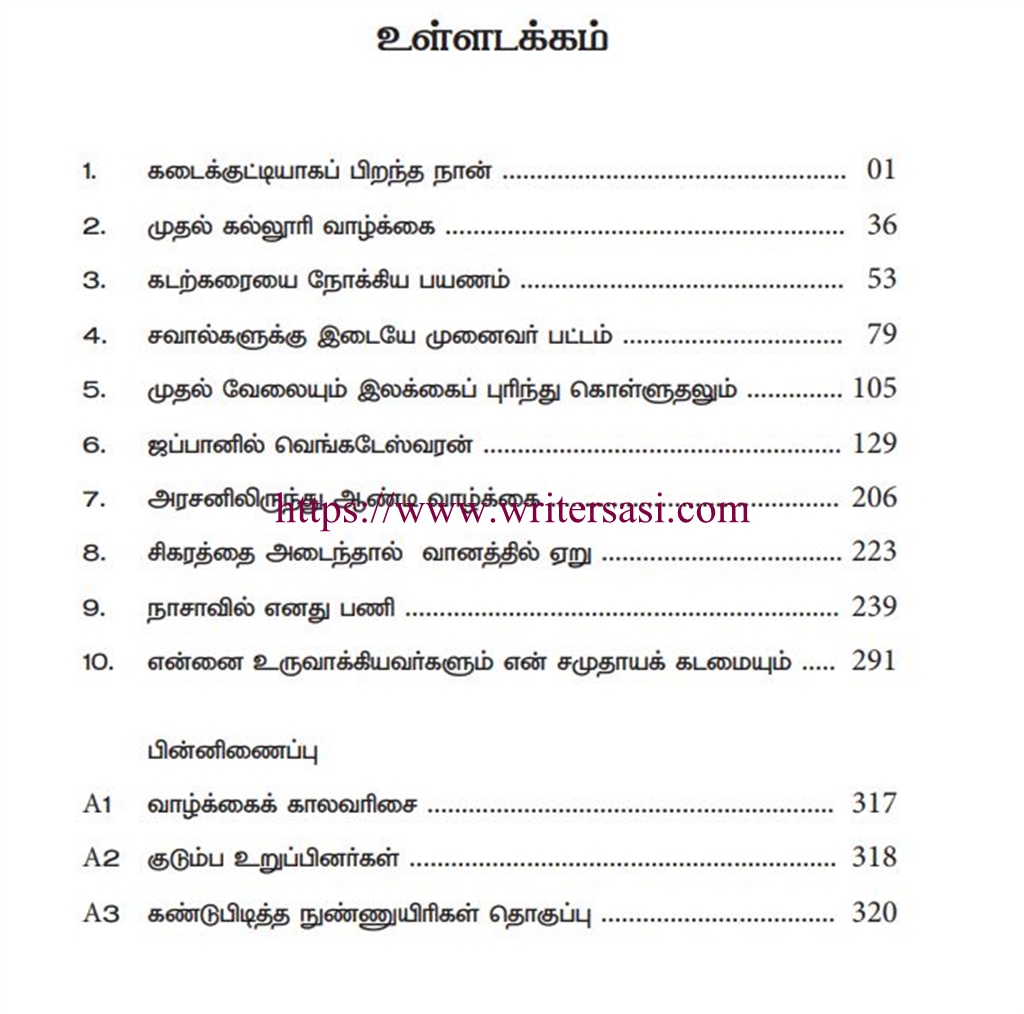
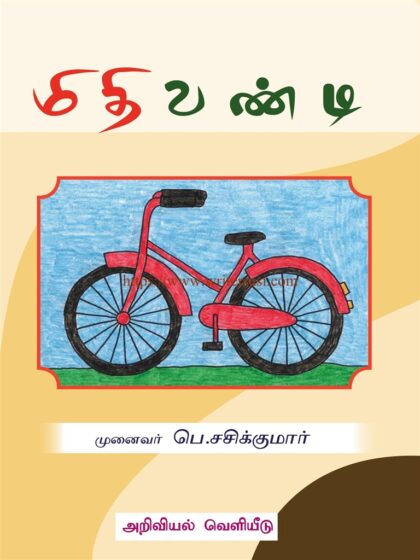
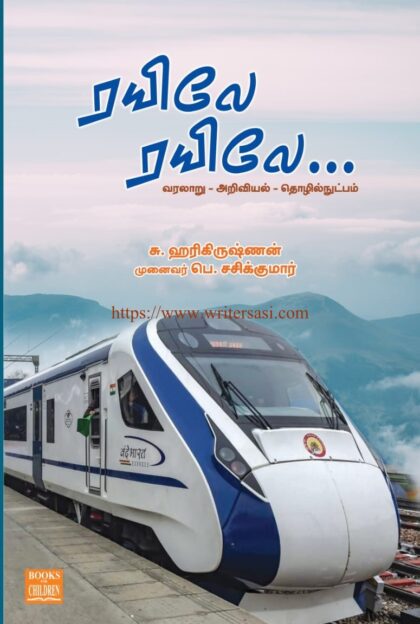
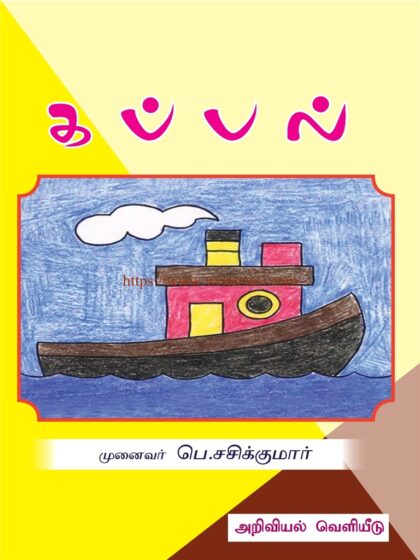
Dr. Kasthuri Venkateswaran, Microbiologist, NASA –
The book “Thoonilumiruppanthurumbilumiruppan,” penned by Dr. Sasikumar, is an engaging exploration of the complex world of microbes. Written in an accessible style, it’s a book that can be understood by everyone, from young children just starting kindergarten to elders who can read Tamil but may lack formal education.
The title translates to “He will be in the pillar, he will be in the grass,” a phrase often used to convey the idea that God or a divine presence is omnipresent. In the past, we often attributed the unexplainable to divine intervention, especially when we lacked logical or scientific explanations. For instance, during outbreaks of diseases like smallpox or chickenpox, people often believed these were punishments from God for sins committed in their lives. More recently we blamed “corona-virus” because we are in “kaliyugam” and the world is going to vanish and we are in “last supper.” But now we know this is because of the virus but need appropriate scientific intervention to contain the disease.
More and more parents (including in developed countries like US) are choosing not to vaccinate their children, and this is causing a rise in diseases that could be prevented with vaccines. Many studies have tried to understand why some parents decide not to vaccinate their kids, delay vaccinations, or are unsure about them.The reasons parents give can be quite different from one another, but they generally fall into four main categories:
1. Religious beliefs
2. Personal or philosophical beliefs
3. Worries about the safety of vaccines
4. A wish to learn more from doctors or nurses before making a decision
These concerns can lead to different decisions. Some parents might refuse all vaccinations for their children, while others might only want to spread out the vaccinations over a longer time.Many parents admit that they have questions or concerns about childhood vaccinations. That’s why it’s important for scientists to make public understandwho are unsure about vaccines. This way, they can better explain to families the importance and safety of vaccines.
Education is key in helping common people understand the facts about microorganisms so they can make the best decisions for their children’s health, since not all microbes are bad. In this regard, Dr. Sasikumar’s book provides straightforward scientific explanations for such phenomena. It demystifies these diseases, helping everyday people understand the real reasons behind their occurrence. It’s a bridge between tradition and modern science, making the mysteries of the microbial world accessible to all.
It’s neat how Abi, the main guy in this book, breaks down complicated stuff so anyone can understand. Even though Abi is still a student, he’s really good at answering all sorts of questions from the kids who ask him things. He talks in a way that’s easy to understand and explains science stuff really clearly.The way he does this makes you want to keep reading the book until the end. What’s really cool is how he answers simple questions with stories that make sense, not just to the kids, but even to grown-ups who know a lot but might not know much about this particular subject.
‘Microbiota’ is a word that refers to all the tiny living things, like bacteria and viruses, that live on and inside our bodies. These little creatures can help us, harm us, or just live alongside us without causing any problems.’Microbiome’ is another word that refers to all the genes, or the genetic material, of these tiny creatures. Scientist usually talk about the ‘microbiome’ more often than the ‘microbiota’, because a lot of what we know about these tiny creatures comes from studying their genes.It’s hard to imagine, but our bodies are home to a huge number of these microscopic inhabitants – somewhere between 10 to 100 trillion! The largest and most diverse group of these tiny creatures lives in our intestines. Such complicated things were explained in simple terms by “Abi – the hero” of the book.
The tiny living things, or microbes, that live in and around us are involved in many parts of our lives. Here are some examples:
1. Yogurt and cheese making: Microbes play a big part in turning milk into yogurt and cheese.
2. Digestion: They help us break down the food we eat in our guts.
3. Tough environments: Microbes can live and help out in places that are hard for other life forms.
4. Bio-fuel: They help make fuels from organic wastes as well as complex organic compounds.
5. Farming: Microbes play a role in growing our food.
6. Bread and Idly making: They help in fermentation process and give them their texture.
7. Waste recycling: They can help turn waste into useful stuff.
8. Cleaning up oil spills: Some microbes can eat oil and help clean up spills.
9. Manufacturing: They can help make a lot of different products.
So, microbes are pretty important in a lot of ways and “omnipresent” everywhere!
Scientists are getting more and more interested in how the tiny creatures living in our guts can affect our health. We scientists are especially curious about how changing these gut creatures might help treat certain health problems.One way to do this is something called a fecal microbiota transplantation (FMT). This is when doctors take poop from a healthy person and put it into someone else’s intestines. The idea is to help change the mix of tiny creatures in the person’s gut in a way that improves their health.This might sound strange, but it’s been successful in treating a tough infection caused by a bug called Clostridium difficile. And there’s some early signs that this poop transplant could also help with other problems like certain gut diseases, obesity, metabolic syndrome (a group of conditions that increase the risk of heart disease, stroke, and type 2 diabetes), and conditions where the gut doesn’t work as it should. Once common people understand the significance of microbial commensals and symbionts, then they will understand the complicated procedures described here.
Abi’s responses to the children’s questions could one day enlighten us all, helping us appreciate the benefits of microbes and understand that it’s these microbes that are truly everywhere, not God as our elders previously explained. This doesn’t mean that the old sayings are incorrect, but now we have some answers for the phenomena we’ve observed in the past without understanding why. I encourage all the school children (science major or not) and commoners to read this book.
Well done, Dr. Sasikumar! It’s truly amazing to see our six months of discussions transformed into a book. It’s evident that you’ve put a lot of effort into research, reading, and networking to understand the complexities of the microbial world. I’m guessing that attending the international conference I organized at IIT-M Chennai in November 2022 gave you some inspiration and provided opportunities to talk with my friends and colleagues for factual information. The detailed statistics and insights you’ve compiled clearly required substantial work. Interestingly, I found myself learning new things even in my own area of expertise. Thank you for your dedication and keep up the exceptional work. Your talent is indeed remarkable!
Dr. Kasthuri Venkateswaran
Microbiologist; NASA – Jet Propulsion Lab., Pasadena, California 91109, USA
writersasi –
எனது சுயசரிதியை எழுத வேண்டும் என்ற ஆவல் நீண்ட நெடுங்காலமாக இருந்தது. ஆனால் ஏன் சுயசரிதியை எழுத வேண்டும் அவற்றில் மற்றவர்கள் தெரிந்து கொள்ள என்ன இருக்கிறது என்ற கேள்வி என்னுள் எழுந்தது.
நான் கடந்து வந்த பாதை அனைவருக்கும் பிடிக்குமா? ஏன் அவர்கள் அதைத் தெரிந்து கொள்ள வேண்டும் போன்ற எண்ணற்ற எண்ணங்கள் இதை எழுதுவதற்கு முன்பு எனக்குத் தோன்றின. கடினப்படாமல் வாழ்க்கையில் இலக்கை அடைய இயலாது. ஒவ்வொருவர் வாழ்க்கையிலும் வேறு வேறு விதமான கஷ்டங்களைச் சந்தித்து இருப்பார்கள். அதனால் நான் கடந்து வந்த பாதையும் உங்களில் பலர் கடந்து வந்திருப்பீர்கள். பின் எதற்கு எனது சுய சரிதை என்ற கேள்வி எழும் அல்லவா?.
மனிதர்களுக்கு வரும் இடையூறுகள் ஒன்று போலத் தான் இருக்கும். ஆனால் அந்த இடையூறுகளை வென்று வெற்றி நடை போடும் மனிதர்கள் சிலர் தான். அங்குதான் நாம் மற்றவர்களிடமிருந்து வேறுபடுகிறோம். எனது வாழ்க்கைப் பயணத்தில் நான் பல இடையூறுகளைச் சந்தித்த போதும் வெற்றிகரமாக அவற்றை வென்று அடுத்தக் கட்டத்தை அடைந்துள்ளேன் என்று இன்று உளமாற நம்புகிறேன். நான் அப்படி அடைந்ததை எனது சுயசரிதை மூலம் உங்களுக்குத் தெரிவிப்பதில் மட்டற்ற மகிழ்ச்சி அடைகிறேன்.
வெறும் சுயபுராணமாக இது இல்லாமல் எனக்கு உதவிய மனிதர்களைப் பற்றி நினைவு கூறும் ஒரு நல்ல நினைவாக இந்தப் புத்தகத்தை எழுதியுள்ளதாக நான் நினைக்கிறேன். எஸ்எஸ்எல்சியில் நன்றாக மதிப்பெண் வாங்கி மருத்துவர் ஆகிவிடலாம் என்று கனவு கண்டிருந்தேன்.
தம்பி நன்றாகப் படிக்கிறான் என்று அண்ணன் நினைத்தார். கடைசிப் பையன் மருத்துவராகத் தான் ஆக வேண்டும் என்று என் அம்மாவும் நினைத்தார். நான் மருத்துவர் பட்டம் படிக்க வேண்டும் என்பதற்காக எனது அண்ணன்கள் வேறு படிப்புகள் படிக்குமாறு அறிவுறுத்தப்பட்டனர். ஆனால் நாம் ஒன்று நினைக்க நடப்பது ஒன்று, என்பது போல் மதிப்பெண் இருந்து என்ன பயன், எனக்கு மருத்துவம் படிக்க இடம் கிடைக்கவில்லை. வேறு வழி இல்லாமல் இளங்கலை உயிரியல் பாடத்தைத் தேர்ந்தெடுத்தேன். கடல் உயிரியல் துறையை முதுகலை பட்டத்தில் தேர்ந்தெடுத்தேன்.
கடல் உயிரியல் படிப்பை முடித்துச் சிறிய உயிரினம், பெரிய உயிரினம் என விதவிதமான கடலில் வாழும் உயிரினங்களை ஆராய்ந்து அனைவரும் முனைவர் பட்டம் பெற்ற நேரத்தில் ஏன் யாரும் படிக்காத புதிய துறையைத் தேர்ந்தெடுக்கக் கூடாது என்ற எண்ணம் எனக்குத் தோன்றியது. அப்படித்தான் கடல் நுண்ணுயிரி துறையில் கால் எடுத்து வைத்தேன். 50 ஆண்டுகளுக்கு முன்பாக விரல் விட்டு எண்ணிவிடும் அளவில்தான் இந்தத் துறையில் ஆராய்ச்சிகள் நடைபெற்று வந்தன.
முனைவர் பட்டம் பெற்றவுடன் போதும் என்று இல்லாமல் எனது ஆராய்ச்சியைத் தொடர்ந்து கொண்டே இருந்தேன். ஒரு கதவு அடைக்கப்பட்டால் மறுகதவு திறக்கப்படும் என்பது போல எனது முயற்சிகளைக் கைவிடாமல் முயன்று கொண்டே இருந்தேன். அந்த முயற்சியில் ஜப்பானில் முதுமுனைவர் பட்டம் செய்வதற்கு வாய்ப்புக் கிடைத்தது. அதையே பயன்படுத்தி ஜப்பானில் வேறு வேறு நிறுவனங்களில் பணி செய்தேன். பின்னர் அங்கிருந்து அமெரிக்கா நோக்கிச் செல்ல வேண்டும் குழந்தைகளின் எதிர்காலத்திற்கு அதுதான் நல்லது என்று முடிவு செய்தேன்.
பொருளாதாரப் பின்னடைவு ஏற்பட்ட போதிலும் அமெரிக்காவில் தஞ்சம் அடைந்தேன். அமெரிக்கா சென்ற 15 மாதங்களில் உலகில் புகழ்பெற்ற நாசாவில் விஞ்ஞானியாக எனக்கு வாய்ப்புக் கிடைத்தது. எனக்குக் கிடைத்த இடையூறுகளைத் தாண்டி என்னால் வெற்றி பெற முடிந்ததற்கு என்னைச் சுற்றி இருந்த நண்பர்களும், குடும்ப உறுப்பினர்களும், தளராத எனது முயற்சியும் தான் காரணம் என்று நம்புகிறேன்.
அதனால் நான் கடந்து வந்த பாதை அனைவருக்கும் ஒரு படிப்பினையாக இருக்கும் என்ற நோக்கத்தில் நுண்ணுயிரித் துறையில் ஆய்வை தொடங்கி அதல பாதாளத்தில் வெந்நீர் ஊற்றைக் கண்ட முதல் தமிழன் என்ற முறையில் இருந்து இன்று விண்வெளியில் சுற்றிக் கொண்டிருக்கும் விண்வெளி நிலையத்தில் உள்ள நுண்ணுயிரிகளையும் ஆராயும் வாய்ப்பு கிடைத்ததை எண்ணி எனது சுயசரிதைக்கு “அதல பாதாளம் முதல் ஆகாயம் வரை” என்று தலைப்பிட்டுள்ளேன்.
ஒரு நூற்றாண்டுகளுக்கு முன்பு எங்கள் குடும்பம் மிகச் சிறு குடும்பம். இன்று ஒரு ஆலமரம் போல் விரிந்து எங்கள் குழந்தைகளும் பேரக் குழந்தைகளும் வேறு வேறு நிலைகளை அடைந்துள்ளனர். நாங்கள் எப்படிப் படித்தோம் வாழ்ந்தோம் என்று அவர்களுக்குத் தெரிய வாய்ப்பில்லை. இந்தச் சுயசரிதையில் அந்தச் செய்திகளையும் சேர்த்து இருக்கிறேன். இது எங்கள் குடும்பத்தில் உள்ள அடுத்தத் தலைமுறைக்கு மட்டுமல்ல பல வீடுகளில் அவர்களுக்கு முந்தைய தலைமுறை எப்படி இருந்தார்கள் என்பது தெரிவதற்கு வாய்ப்பில்லை.
இந்தப் புத்தகத்தை மூன்று பாகங்களாக நீங்கள் வாசிக்கலாம். ஒன்று ஒரு நடுத்தரக் குடும்பம் படிப்பு என்னும் ஆயுதத்தைக் கையில் எடுத்ததன் மூலம் அதன் குடும்ப உறுப்பினர்கள் எப்படி முன்னுக்கு வந்தனர் என்பதைப் புரிந்து கொள்ளலாம். பணக்காரர் ஏழை என்று எல்லாத் தரப்பு மக்களுக்கும் கல்வியின் முக்கியத்துவத்தை இது உணர்த்தும் என்று நம்புகிறேன்.
இரண்டாம் பாகத்தில் கிடைத்த வேலை போதும் என்று தன்னுடைய திறமையைக் குறைத்து மதிப்பிட்டுக் காலத்தை ஓட்டும் எண்ணற்ற இளைஞர்களை இன்று நான் பார்க்கிறேன். நமது இலக்கை முடிவு செய்துவிட்டால் அதை அடைவதற்கு எந்த இடையூறு வந்தாலும் இடைவிடாமல் முயற்சி செய்த எனது கதையை நீங்கள் இங்கே காணலாம். நாம் இருக்கும் இடம் அடைய வேண்டிய இலக்கு அல்ல என்பதை நாமே சுய பரிசோதனை செய்து கொண்டு மேலும் முன்னேறுவதற்கான முயற்சிகளை எடுக்க வேண்டும். அந்த முயற்சிகளை நான் எப்படி எடுத்தேன் எனது நண்பர்கள் எப்படி உதவினார்கள். ஒரு நிறுவனத்தில் நன்றாக நான் பணியாற்றிய பொழுது அது எப்படி அடுத்தடுத்த நிறுவனங்களுக்கு எனக்கு நல்லதொரு வாய்ப்பை வழங்கியது போன்ற எனது வாழ்க்கை பாடத்தின் தொகுப்பாக இருக்கும்.
ஒரு சுயசரிதையைச் சுயபுராணமாகவே எழுதிவிட்டால் படிப்பவர்களுக்கு அதிலிருந்து எடுத்துக்கொள்ள எதுவும் இருக்காது. அதனால் மூன்றாம் பாகத்தில் ஒர் அறிவியல் புத்தகமாக இந்தச் சுயசரிதை விரிவடையும். நுண்ணுயிரி என்ற துறை பல இடங்களில் இன்று பயன்படுகிறது. ஆனால் இந்தத் துறை எப்படி விண்வெளிக்கு உதவுகிறது. மனிதன் தான் இந்தப் பிரபஞ்சத்தில் ஒரே உயிரினமா மற்ற உயிரினங்களை ஏன் நாம் உயிரினம் என்று கருதவில்லை. இது போன்ற கேள்விகளுக்கும் நான் என்ன வேலை செய்து கொண்டிருக்கிறேன் என்பதை விளக்கி நுண்ணுயிரிகளை ஏன் படிக்க வேண்டும் என்ற அறிவியல் கருத்துக்களை மூன்றாம் பாகம் விரிவாக அலசும்.
துறை சார்ந்தவர்கள் மட்டுமல்லாமல் எனது சுயசரிதையில் நான் கற்றுக் கொண்ட பாடம் அனைவருக்கும் உதவும் வகையில் இந்தப் புத்தகம் இருக்கும் என்று நான் நம்புகிறேன்.
எனது படிப்பை முடிக்கப் பொருளாதார முறையில் எனக்கு உதவி செய்த அண்ணன் ராஜகோபாலன் மற்றும் என்றும் குறையாத அன்பை வெளிப்படுத்திக் கொண்டிருக்கும் என் அண்ணி காயத்ரி ஆகியோருக்கு இந்த நேரத்தில் எனது நன்றியைத் தெரிவித்துக் கொள்ளக் கடமைப்பட்டிருக்கிறேன்.
கடந்த 42 வருடங்களாக நான் சோர்வாக இருந்தபோதெல்லாம் என் வாழ்க்கைத் துணைவி புஷ்பா உதவியாக இருந்தார், மேலும் எந்த ஒரு தவறான முடிவையும் அவசரப்பட்டு எடுக்காமல் இருக்க எனக்கு உதவினார். அவள் என் மீது காட்டிய தன்னலமற்ற அன்புக்கு நான் கடமைப்பட்டுள்ளேன்.
எனது முன்னேற்றத்தில் உறுதுணையாக இருக்கும் குழந்தைகள் தர்ஷினி, ப்ரீத்தம் மற்றும் என் அண்ணன்கள் மற்றும் அனைத்து குடும்ப உறுப்பினர்களையும் இந்த நேரத்தில் நினைவு கூற விரும்புகிறேன்.
ஜப்பான் அமெரிக்கா என்று பல நாடுகளில் பணி நிமித்தமாகப் பல நிறுவனங்களில் நான் வேலை செய்த போது புதிய தொழில்நுட்பங்களைக் கற்றுக் கொள்ளவும் புதிய ஆராய்ச்சிகளைச் செய்யவும் பல நாடுகளைச் சேர்ந்த சக ஆராய்ச்சியாளர்கள் எனக்கு உதவினர். அவர்கள் ஒவ்வொருவரிடமிருந்தும் எனக்குக் கிடைத்த நட்பு எனது திறமையை மெருகேற்ற உதவியது என்றால் அது மிகையல்ல. அப்படி நிறைய நண்பர்கள் எனக்கு இருக்கிறார்கள். அவர்கள் அனைவருக்கும் எனது நன்றியை இந்நேரத்தில் தெரிவித்துக் கொள்ள விரும்புகிறேன்.
தமிழில் கடிதங்கள் எழுதி அரை நூற்றாண்டுக்கும் அதிகமாகி விட்டாலும் எனது சுயசரிதையை முதலில் தமிழில் தான் எழுத வேண்டும் என்று ஆசைப்பட்டேன். என்ன நடந்தது என்று நான் மட்டும் கூறிக் கொண்டிருக்காமல் என்னைச் சுற்றி வந்த கதாபாத்திரங்களும் என்னைப் பற்றியும் என் வாழ்வைப் பற்றியும் என்ன நினைக்கிறார்கள் என்பதை யாராவது பொறுமையாகக் கேட்டு அதையும் எனது சுயசரிதியில் எழுத வேண்டும் என்று ஆசைப்பட்டேன். பல அறிவியல் புத்தகங்களைத் தமிழில் எழுதி உள்ள சசிக்குமார் அந்த வேலையைச் செவ்வனே செய்து எனது சுயசரிதையை எழுதி முடிப்பதில் உதவி செய்தார். என்னிடமும் பலரிடமும் எண்ணற்ற கேள்விகள் மூலம் நடந்த நிகழ்ச்சிகளைச் சேகரித்துக் கோர்வையாக நல்ல தமிழ் நடையில் மிகக் குறுகிய காலத்தில் எழுதி இந்தப் புத்தகம் வெளிவருவதற்கு உதவிய அவரது விடாமுயற்சி பாராட்டுக்குரியது.